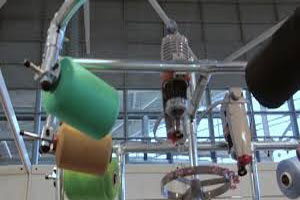
Vietnam textile industry facing challenges brought by automation
YarnsandFibers News Bureau 2017-12-15 17:00:00 – HCM cityVietnam textile and garment industry facing a great challenge in meeting the requirements of productivity, quality and fashion trends as the yarn, fabric and dyeing sectors need some 300-400 engineers every year, while universities supply only around 30, according to experts.
Hoà ng Xuân Hiệp, principal of the Hà Nội Industrial Garment and Textile University said that trained workers only account for around 25 percent of the workers in the sector. There is a training shortfall.
For instance, 11 schools in HCM City offer training in textile and garment-related skills and produce 1,900 graduates a year, but demand in the city runs into several thousands.
The remaining 75 percent of workers in the sector are not trained or are trained for less than three months.
Fashion designers are not capable of designing and overseeing production on a large scale they are trained mostly in small-scale production.
The Party Central Committee’s Economic Commission said that the fourth industrial revolution, which is ushering in automation, is reducing the need for manual labour in the textile industry.
As a result, 86 percent of garment and footwear workers are expected to be affected by the labour-replacement process in Vietnam.
The annual demand for workers is expected to rise to 60,000 by 2025.
But the demand for unskilled labour will be only around 50 percent of that, with workers with intermediate- and college-level training and technical training accounting for the rest.
On the other hand, the demand for skilled engineers is increasing, according to the World Bank. Vietnam should focus on developing modern skills for its young people, the bank added.
As per experts, it would be essential to train workers to modernize production in the country. In countries adapting more slowly to the technological changes, the labour-replacement process would also be slower.
Market Intelligence
Ask for free sample Report

experience
Customer Base
dedicated team
Countries Served Worldwide









